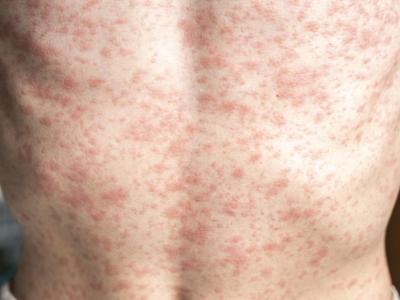Mar 30, 2009
WHO confirms H5N1 infection in Egyptian girl
The World Health Organization (WHO) today confirmed H5N1 avian influenza in a 2-year-old Egyptian girl from Qena governorate who is hospitalized in stable condition. She got sick on Mar 23 and was admitted to the hospital the next day and immediately treated with oseltamivir (Tamiflu). A probe into the source of her infection revealed she had close contact with sick and dead poultry before she became ill. The WHO's confirmation raises the number of H5N1 cases in Egypt to 60, of which 23 were fatal. The global H5N1 count rises to 413 cases and 256 deaths.
[Mar 30 WHO statement]
Hawaii seeks input on pandemic vaccine allocation
The Hawaii Department of Health has launched a program to gather the public's input on what groups should be vaccinated first in an influenza pandemic, the Honolulu Advertiser reported yesterday. The department's advisory group on pandemic vaccine allocation will launch a public education campaign in April that will feature three live, 1-hour telecast forums, community meetings, and an "Alternate Reality Game."
Phase 1 trial of DNA flu vaccine yields modest results
A phase 1b clinical trial of a DNA vaccine for seasonal influenza yielded modest results but offered the first evidence that a DNA vaccine can protect humans from disease, according to the authors, who reported the study recently in Vaccine. The vaccine contains DNA that encodes influenza hemagglutinin and is delivered by propelling microscopic gold beads into the skin. Volunteers received either 4 micrograms (mcg) of trivalent vaccine, 2 mcg of trivalent vaccine with an adjuvant, or a placebo; 56 days later they were exposed to a common seasonal flu virus. Compared with the placebo group, the 4-mcg group had reduced symptoms, a significant 53% reduction in upper respiratory tract infections, and nonsignificant reductions in lab-confirmed flu and in any illness. The authors say the findings show that the vaccine needs further development but support the principle that DNA vaccines can protect humans from flu.
[Vaccine abstract]
H5N1 virus tested against physical, chemical challenges
To help guide the use of biosecurity measures for poultry farms, Pakistani scientists examined the effects of a wide variety of physical and chemical conditions on H5N1 avian influenza viruses. Among their findings, reported in the Virology Journal: Soap, detergent, and alkali (caustic soda) destroyed the virus within 5 minutes at respective dilutions of 0.1%, 0.2%, and 0.3%. An hour of exposure to ultraviolet light did not kill the virus. It survived no more than 30 minutes at 56ºC but persisted more than 100 days at 4ºC. All commercially available disinfectants killed the virus when used at recommended concentrations.
[Virology Journal abstract]
Two nondrug antiseptics work better when combined
Research presented at the annual meeting of Britain’s Society for General Microbiology indicates that two long-standing nondrug antiseptics, tea tree oil and silver nitrate, kill bacteria more efficiently when combined. The study also indicated that the antimicrobials can be delivered in smaller, less toxic doses if packaged in microscopic spheres called liposomes, made from natural lipids. The antiseptics were tested on pathogens that commonly cause wound infections, including Staphylococcus aureus.
[Mar 29 EurekAlert press release]



















